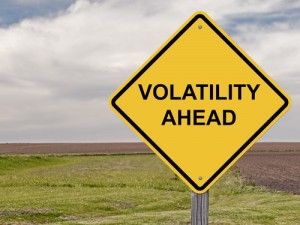What is VIX?
There is a lot of power in understanding VIX as it relates to Stock trading but even more important in regards to Options trading. 
Let’s get in to it 🙂
Just like the Dow Jones industrial Average, VIX is an index calculated on a real time basis, through each trading day. The main distinction is that it measures volatility and not price. VIX came into being due to the need to quantify short-term market volatility. It provides an index on which futures and option contracts can be transcribed. VIX futures contracts were propelled by the Chicago Board Options exchange, otherwise known as ‘CBOE’ in May 2004. VIX is considered by many the worlds’ premium barometer of investor opinions and market volatility. Consequently the VIX formula isolates expected volatility from other factor that may affect option process. As a result, it is the gateway for investors to buy and sell options volatility in a more simple and direct way, without having to deal with other risk factors. For this reason, VIX is the forward-looking measuring volatility that investors anticipate to realize. The volatility index is implied by the current prices, the S&P500 index options and denotes expected future market volatility over a 30 days term.
How is VIX calculated?
Anticipated variance of each ending month is derived from a set of option prices and strikes, given time to expiration and risk-free interest rate. Volatility index is computed using principally quotes of out of money options. It is comprised of each option reflecting the markets expectation of future instability. It generally employs rules of selecting component options and formula to calculate index values. The VIX calculation measures time to expiration in scheduled days. It divides each day into minutes in order to duplicate the exactness that is commonly used by options and volatility sellers and buyers. The range of options with non-zero bids tend to expand and contract when volatility rises and falls. Therefore, the number of options used in VIX calculation may vary from day to day or month to month.
A quick and simpler way of calculating VIX is by selecting the options to be included in the VIX calculation. Each option contribution is then calculated to get the total variance of its expiration month. The calculation of the total variance for the first period and the second period then follows. Additionally interpolating and extrapolating the two variances is of great importance in order to get the 30-day variance, depending on the day and the time to expiration. To complete the calculation; take the square root to get the volatility as standard deviation. Multiply the standard deviation by 100; the end result is the volatility index.
Volatility index futures in detail
Being the most far and wide shadowed and recognized volatility product, exposure to the index is achieved primarily by trading. The VIX futures curve is often far steeper in the near term than in the far term. The VIX futures market is mainly covered in three scopes. These are: forecast accuracy, pricing, and risk management. VIX future prices are determined by supply and demand dynamics in the market. This is to say that, if the fair value pricing today is a function of projection about tomorrow’s variance, and there is greater potential variability about this variance, then the fair variance should exhibit greater variance.
The return part of the volatility index exchange trade fund (VIX etf) differs radically from that of the VIX index. VIX eft is unequivocally a short-term strategic tool used by traders. Traders take risks with the VIX eft because it offers the best means to get at the VIX index in a short-run.
What is implied VIX on options?
VIX emerges during market uproar; when two forces are at play. So it serves as a market volatility gauge. When the volatility decreases, investors demand lower return rates on stock return. Whereas when volatility increases, investors demand higher rates on stock return. Hence stock price change or vary depending on the market volatility. An increase in VIX typically leads to a fall in stock prices, while a decrease results into a rise in stock prices.
Alongside the price of the underlying stock and the amount of time until expiration. Implied volatility shows how much movements the market expects from the underlying stock during the lifespan of the option. While there might not be VIX shares to trade, you can place you bets on volatility index (VIX) with VIX options. Volatility index options are not based on the price of the spot, as an alternative, the underlying asset is the expected value of the VIX at expiration. The value of VIX options is more closely correlated with VIX future than the real time volatility index.
Conclusion
To conclude, most investors are familiar with the VIX; a measure of the implied equity market volatility.
Watching what the VIX is doing can help you to understand what the market is thinking and whether it looks like a market correction is coming or the stock market is in a smooth sailing uptrend. The lower the VIX is the more the market thinks we’re in for more uptrend whereas if the VIX is high the market thinks there is trouble.
To your Wealth!
 Follow
Follow